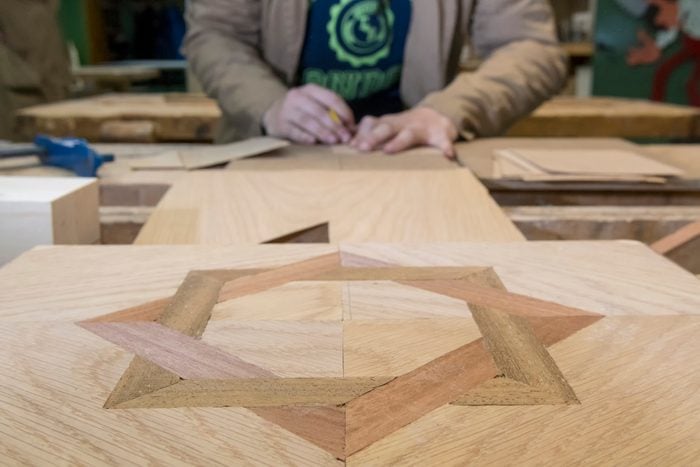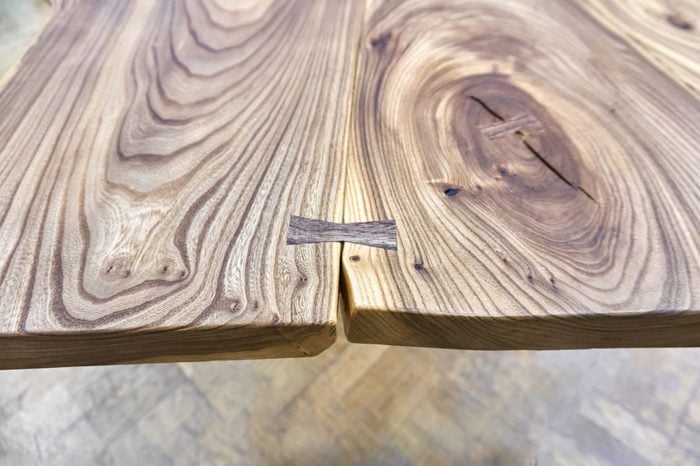
Bow Tie
A bow tie inlay is a great pattern to learn because it’s attractive and practical. The wider-at-the-ends construction makes it good for patching a crack or joining two pieces of wood at the side.
Since it serves as a physical pin when joining wood, it needs to be set deeper than when purely decorative. It should be around 25% to 30% of the depth of the pieces being joined together. To ensure a strong joint, cut your inlay so the grain runs along the length of the bow tie.
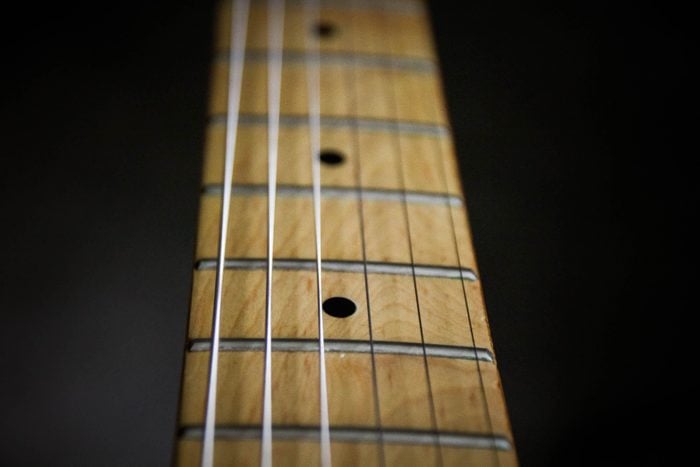
Circle
This is another classic pattern. Ideally used as a small detail or large decoration, a circle can be the basis for infinite variety.
The most commonly seen circular inlays are the fret markers on guitar necks. These can be made from any woodworking material, from pearl to exotic woods. Precut wood circles are available online, and exotic wood dowel rods can be trimmed to serve as inlays.
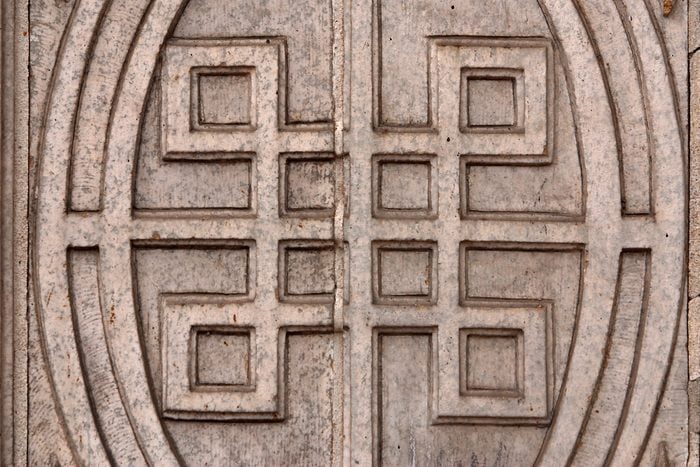
Knot
Knots have been popular in woodwork and textiles for centuries, frequently found in corners of tables or door panels. Square-edged Celtic knot inlays are a particularly good fit for woodworking beginners since their crisp corners eliminate the need for matching curves throughout the knot.
The appearance of overlap in the knot comes from thoughtfully selecting the grain direction in the inlay material, as well as choosing where to break the inlay into subsections. A break right before an intersection combined with a change in grain direction sells the illusion of a knot.
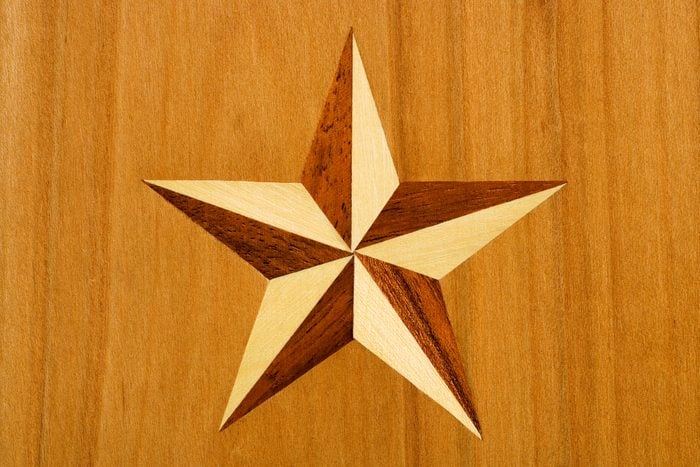
Star
A star can be a single shape (like a cookie-cutter outline) or a series of smaller shapes. The inlay in this image uses ten similarly-shaped triangles, arranged in contrasting pairs to give a sense of depth. This is often referred to as a “layered inlay.”
Learning to work with relatively simple shapes will give you the confidence to apply those skills to more complex inlays later in your woodworking journey.
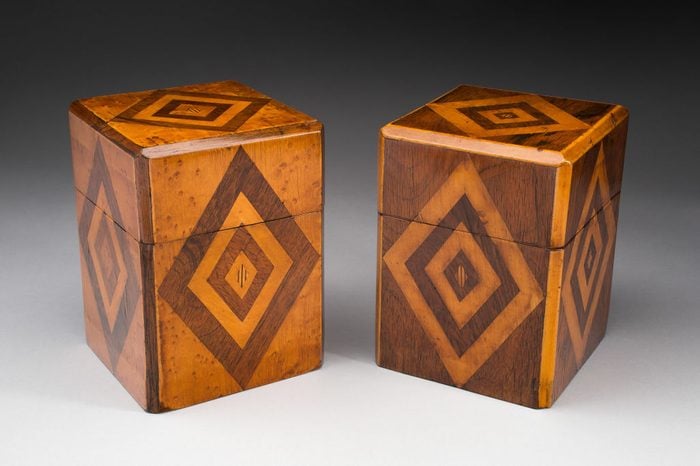
Nesting Shapes
This technique can add complexity to any of the patterns we’ve already seen.
Even a simple geometric shape can look complex by layering in a smaller, identical shape, like a diamond within a diamond. Another option is to contrast shapes, like a circle within a square, triangle within a circle, etc.
The basic concept of nesting is simple: Install an inlay in the base material, then install another within the first. Doing it in this order lets you make the most of the base’s stability.
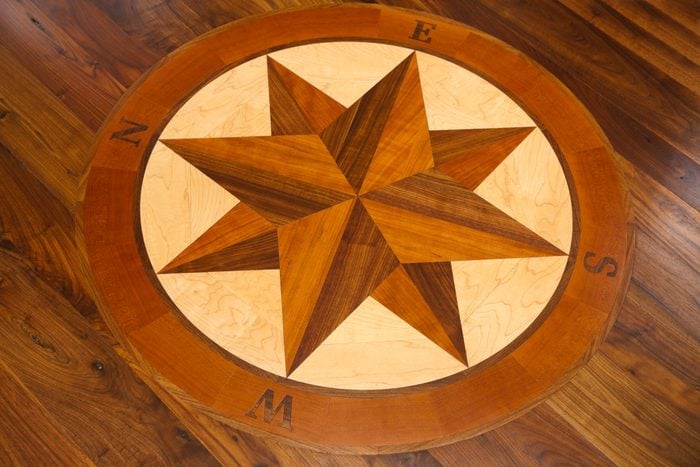
Compass Rose
This classic layered inlay pattern flourished in England in the 18th century and remains popular today. Unlike most inlay patterns, we can even trace its popularity in the U.S. to a single individual. According to the Vermont Guild of Cabinet Makers, Boston cabinetmaker Ebenezer Hartshorn introduced the compass rose to America.
Today, compass roses are found everywhere from flooring to kayak hulls. It’s a great detail on nautically-themed items, or to give your work a sense of travel and adventure.
These patterns can be structured as simple shapes or incredibly complex designs. Compass roses are a step up for woodworkers who successfully tackled a few simpler inlays and understand how to break the rose into component shapes.
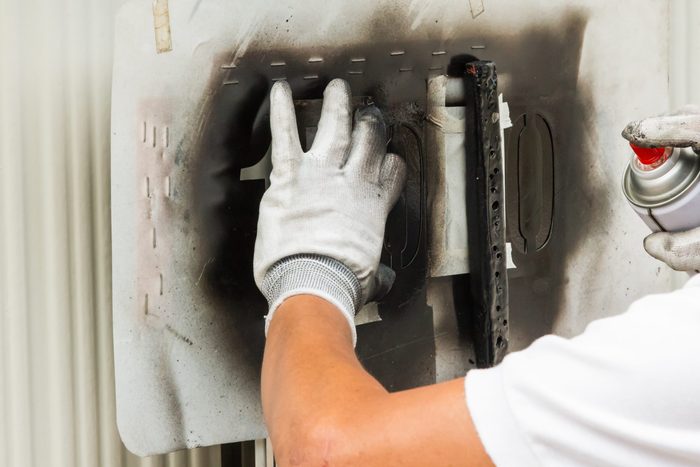
Spray Paint Stencils
Some of the patterns on this list are centuries old, but you can often find great inlay inspiration from a thoroughly modern invention: spray paint stencils.
Paint stencils tend to feature solid shapes with a clear outline, great for inlay patterns. Of course, paint is a different medium, and not all stencils make the transition to woodwork. Remember to look for patterns with straight lines, gentle curves and areas that aren’t too fine.
To use a stencil with a more complex shape, trace the shape on the inlay material, then cut it out with a coping saw, scroll saw, router or other tool. Then set the cut-out piece on the base material and trace it. Don’t use the stencil on both the inlay and base; best to capture any inlay cut-out imperfections in the inlay recess.
